
A military band is a group of personnel that performs musical duties for military functions, usually for the armed forces. A typical military band consists mostly of wind and percussion instruments. The conductor of a band commonly bears the title of Bandmaster or Music director. Ottoman military bands are thought to be the oldest variety of military marching bands in the world, dating from the 13th century.

The Canadian Guards was an infantry regiment of the Canadian Army that served in the same role as the five regiments of foot guards in the British Army. The regiment was formed on 16 October 1953, by Lieutenant-General Guy Simonds, the Chief of the General Staff of the Canadian Army, with the redesignation of four separate battalions:
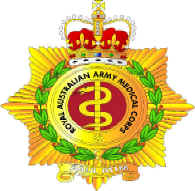
The Royal Australian Army Medical Corps (RAAMC) is the branch of the Australian Army responsible for providing medical care to Army personnel. The AAMC was formed in 1902 through the amalgamation of medical units of the various Australian colonies and was first deployed to South Africa as a small detachment of personnel supporting the Australian Commonwealth Horse during the Second Boer War. The corps has participated in every Australian Army operation since then, including wars and peacekeeping operations. The "Royal" prefix was granted in 1948.

The Scottish Division was a British Army Infantry command, training and administrative apparatus designated for all Scottish line infantry units. It merged with the Prince of Wales' Division, to form the Scottish, Welsh and Irish Division in 2017.
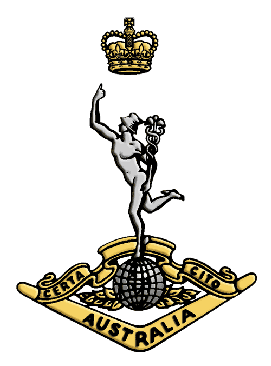
The Royal Australian Corps of Signals (RASigs) is one of the 'arms' of the Australian Army. It is responsible for installing, maintaining, and operating all types of telecommunications equipment and information systems. The motto of the Signals Corps is Certa Cito and is translated as 'Swift and Sure', signifying the aim of the signal service – that communication be carried out with maximum speed and certainty. Like their British counterparts, the Royal Australian Corps of Signals' flag and hat badge feature Mercury, the winged messenger of the gods, affectionately referred to by members of the corps as "Jimmy".

This article describes the current structure of the Australian Army. It includes the army's order of battle and the headquarters locations of major units. Members of the Australian Army also serve within joint units of the Australian Defence Force which fall outside the direct command of the Australian Army.
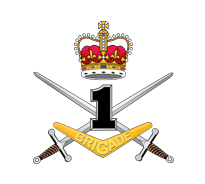
1st Brigade is a combined arms formation of the Australian Army. Formed in 1903 as a militia formation based in New South Wales, it was reconstituted as part of the Australian Imperial Force in 1914 for service during World War I, the brigade fought at Gallipoli and on the Western Front before being disbanded in mid-1919. In 1921, the 1st Brigade was re-raised as a unit of Australia's part-time military forces, based in New South Wales. During World War II the brigade undertook defensive duties before being disbanded. In 1948, it was re-raised as an integral part of the Australian Regular Army. Currently the brigade is based at Robertson Barracks in Darwin and at RAAF Base Edinburgh near Adelaide, South Australia. It is the first of the Australian Army brigades to be re-organised as a combat brigade under Plan Beersheba.

Army Recruit Training Centre (ARTC) is the official name given to the Australian Army's basic training establishment since 1 December 1998. Situated at Kapooka, an outer suburb of Wagga Wagga, in the Riverina region of New South Wales, the Army Recruit Training Centre (ARTC) is located within Blamey Barracks, about 9.5 km south-west of Wagga Wagga.

The 3rd Brigade is a combined arms brigade of the Australian Army, principally made up of the 1st and 3rd Battalions of the Royal Australian Regiment. Initially raised in 1903 as part of the post-Federation Australian Army, it was removed from the order of battle in 1906 following the restructure of the field force. It was re-formed in 1914 for service during World War I, taking part in the fighting at Gallipoli and on the Western Front in Europe. During World War II the brigade was used in a defensive role before it was disbanded in 1944. It was re-raised in 1967 for service during the Vietnam War and later went on to provide the nucleus of the deployment to East Timor during the Australian-led intervention in 1999. The brigade is currently based at Lavarack Barracks in Townsville, Queensland.
Enoggera Barracks is an Australian Army base in the northwestern Brisbane suburb of Enoggera in Queensland, Australia. It was officially established in the early 20th century when the area was used for field training, although the area was used by military units as far back as the mid-19th century. Since then it has been developed into a modern military base, which is now home to units of the 7th and 11th Brigades as well as the headquarters of the 1st Division and the 16th Aviation Brigade.

Robertson Barracks is a major Australian Army base located in Holtze, an outer suburb of Darwin, Northern Territory, around 15 kilometres east of the Darwin city centre.
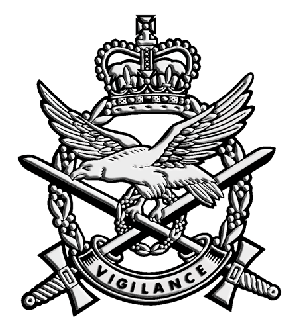
The Australian Army Aviation (AAAvn) is an administrative corps of the Australian Army. It was formed on 1 July 1968. The motto of the Australian Army Aviation corps is Vigilance.
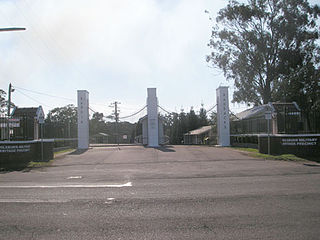
Ingleburn Army Camp was a purpose-built camp constructed in 1940 for the Australian Army at Ingleburn, New South Wales, Australia.

The 11th Brigade is an Australian Army brigade which currently comprises most Australian Army Reserve units located in Queensland. The brigade was first formed in early 1912 following the introduction of the compulsory training scheme. Later, as part of the 3rd Division and saw action during World War I on the Western Front as part of the First Australian Imperial Force. In the interwar years, the brigade was re-raised with its headquarters in Brisbane.

The page contains the current structure of the British Army. The British Army is currently being reorganised to the Future Soldier structure.

The Australian Army Band Kapooka (AAB-K) is a full time military band in the Australian Army. Being a band, it is a sub-unit of the Australian Army Band, the army's official music branch. It is one of eleven military bands of the army and as the official band of the 1st Recruit Training battalion (1RTB). It performs regularly in its area of operations that includes Kapooka, Riverina, and Wagga Wagga. The current director of music is Major Michael De Jonge.
The Australian Army Band Sydney (AAB-S) is a full time military band of the Australian Army. It is a sub-unit of the Australian Army Band Corps, the army's official music branch.
Future Soldier is a reform of the British Army resulting from the Integrated Review of Security, Defence, Development and Foreign Policy published in March 2021. The aim of the reform is to create a more lethal, agile and expeditionary force, able to fight and win wars and to operate in the grey-zone between peace and war. Future Soldier was published on 25 November 2021 and deals with the organizational changes of the British Army, with changes to personnel and equipment were set out in the Defence in a Competitive Age paper published on 22 March 2021.




















